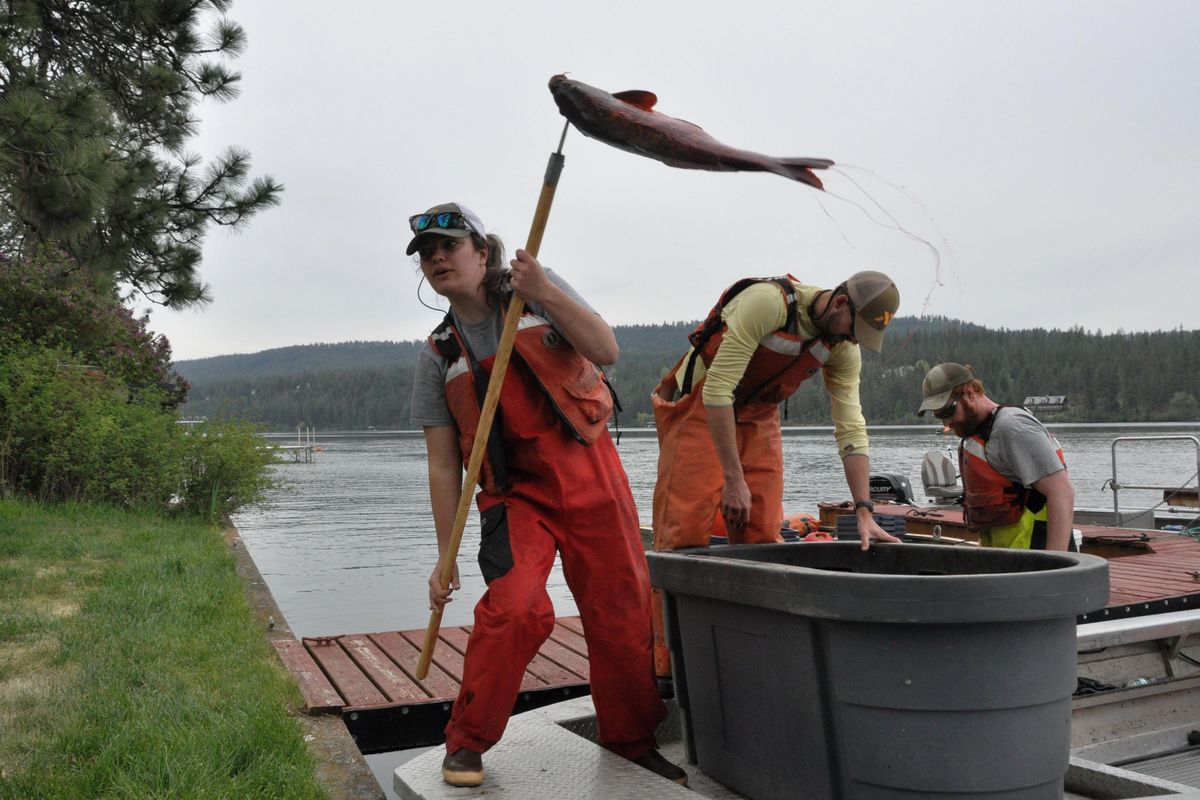Lake Spokane carp removal project wraps up gillnets for season

A total of 1,119 carp were removed from Lake Spokane during two weeks of gillnetting to hone techniques for reducing numbers of the bottom-feeding fish and improve water quality in the Spokane River reservoir.
The second and last week of the project ended Thursday with 569 carp caught, up from 550 the first week.
“More of the carp were moving into the shallows to spawn, giving us a better chance of catching them,” said Marc Divens, Washington Department of fish and Wildlife warmwater fisheries research biologist. He said the information on water temperature and timing will be used in following years to target the carp more efficiently.
The carp removal project is led by Avista as part of its federal relicensing agreement to improve water quality in Lake Spokane. Carp are notorious for stirring up lake bottom sediments as they feed.
Three years ago, Avista caught, radio tagged and released carp in a survey to determine where most of the carp congregate to spawn.
Also netted and killed this week were 46 northern pike, down from 117 removed during the first week. “The pike spawn appeared to be mostly over and they were moving out of the shallower areas we were targeting for carp,” Divens said.
Pike are not specifically being targeted by the project, Divens said, but since they’re classified as a prohibited species in Washington, they’re being removed if caught in the nets, which extend 10 feet up from the bottom.
The largest pike reported caught in the effort weighed roughly 25 pounds; another was 23 pounds and 42 inches long. Small pike would go through the large net mesh, Divens said. The largest walleye was 30 inches long and the carp caught in the nets ranged 14-32 inches long.
Other bycatch in the nets are being released if still alive when the fisheries technicians pull the nets each day of the project. Divens reported the following totals for the top bycatch species during the six nights of netting in the two weeks of the project:
Tench (115 total, 113 released alive), large-scale sucker (97 total, 87 released alive), walleye (60 total, 38 released alive), largemouth bass (34 total, 21 released alive), bullhead (29 total, 28 released alive), northern pikeminnow (18 total,14 released alive) black crappie (12 total, 12 released alive).
Gillnetting proved to be far more effective in removing carp than tests of electrofishing boats, Divens said. However, electrofishing removed 84 carp in the second week, indicating that’s more effective when the carp are more keyed to spawning.